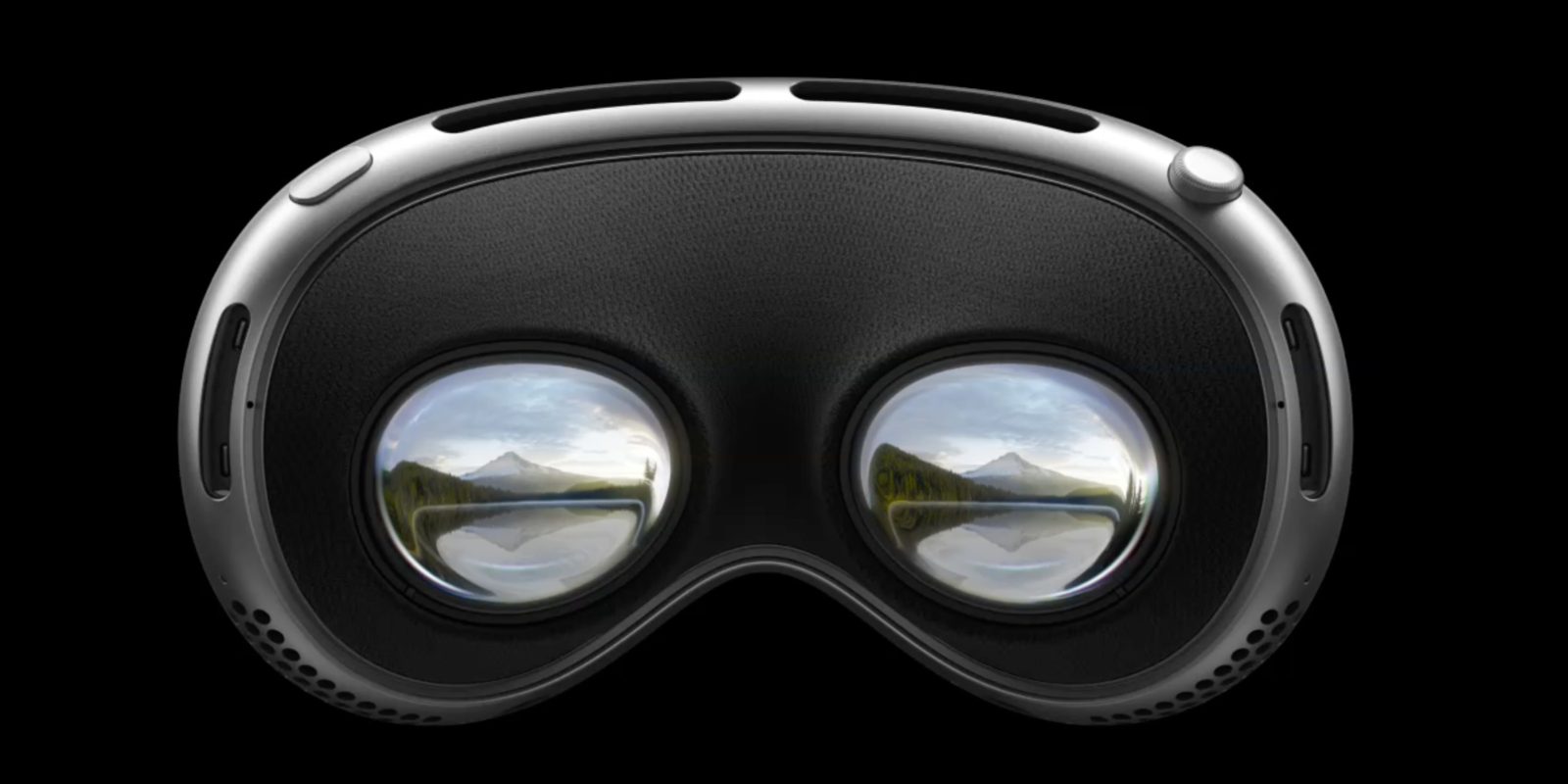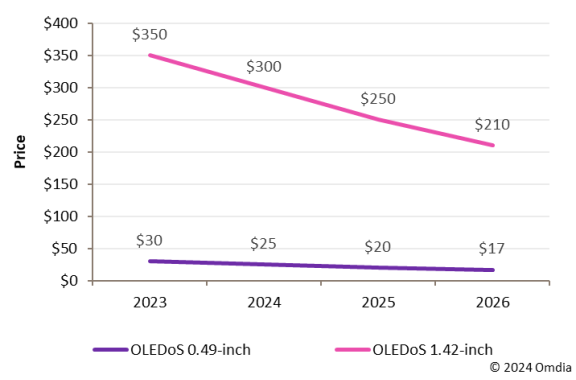
A primary contributor to the high price of Apple Vision Pro is the displays it uses; two cutting-edge 4K micro-OLED displays, one for each eye. Research analysts at Omdia report the current 1.4-inch OLED displays cost Apple about $300 each.
That means, of the $3500 starting price for the Apple Vision Pro, about 20% (~$600) of that money just goes to paying for the cost of the displays. (That’s not counting the outward facing EyeSight display, either). The good news for the future Vision Pro roadmap is that cost of these micro-OLED panels is coming down, albeit slowly.
Omdia says when Apple first started mass producing Vision Pro, the cost of the 1.42-inch micro-OLED panel was around $350 each. Following negotiations as production ramped, that has now come down to about $300 per unit.
Omdia predicts another $50 drop to $250 per unit in 2025, and expects prices around $210 per unit in 2026. That means we are a looking at a potential 33% cost saving on these key components, by the time we expect a second-generation Apple Vision Pro to hit the market.

Right now, these panels are so densely complicated and intricate they are only manufactured by Sony. Some prior reports indicated Sony only has capacity to make about 1 million panels per year, thereby capping Vision Pro sales potential at around 500,000 sales per annum.
However, more suppliers are expected to enter the supply chain in the next couple of years, which will improve supply and should also help with price competition.
While a second-generation version of the high-end Vision Pro product is in the works, Apple is also rumored to launch a cut-down ‘Apple Vision’ as soon as the end of next year. The rumored costs of the Apple Vision is in the $1500-$2000 range, almost half the price of the current Vision Pro. That device may include lower-quality displays like LCD screens, rather than micro-OLED, for cost reasons.
FTC: We use income earning auto affiliate links. More.





Comments